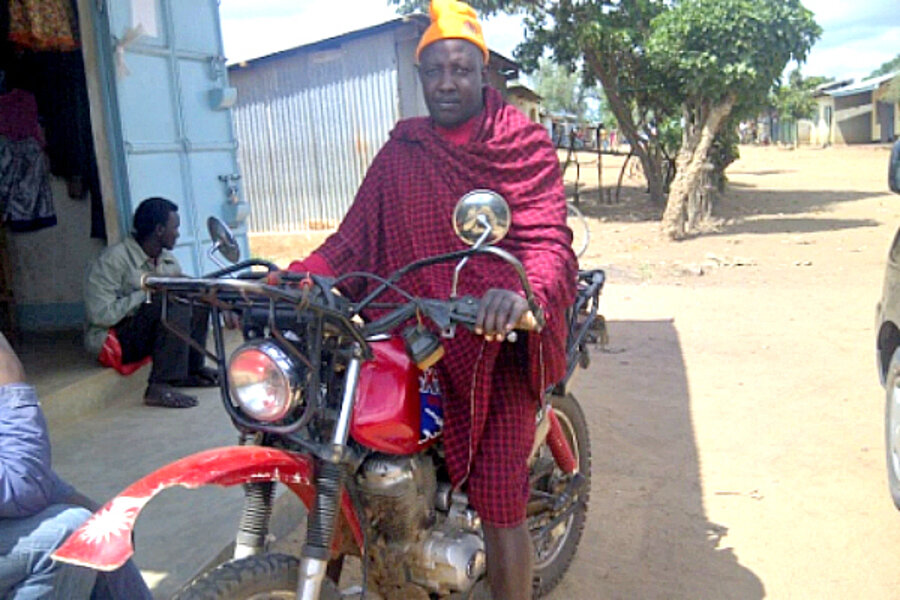Maasai herders breed fewer, stronger cattle to resist climate change
Loading...
| Londigo, Tanzania
The loss of more than half their livestock in the 2009 drought has led Maasai pastoralists in northern Tanzania’s Arusha region to breed fewer, stronger cattle and end their traditional focus on numbers alone as symbols of wealth and status.
The impact of that devastating drought, which dealt a blow to the whole nation’s economy, is still visible in the small number of cattle in many villages of Engarenaibor in Arusha’s Longido district.
The district’s cattle breeders and owners lost at least 120,000 cattle, more than half the total herd of 200,000, as a result of the drought, which plunged the region into poverty and threatened the pastoralists’ traditional livelihood.
The good news emerging from this blow to their way of life is that breeders have realized that in a time of climate change their wealth lies not in the size of their herd but in its quality.
“The days of keeping many head of cattle for prestige are gone thanks to the 2009 drought. It has taught us a lesson. A lesson to adapt to climate change,” says cattle owner Ngaiyok Legilisho Kipainoi.
For many years, Maasai pastoralists had resisted government pressure to reduce the size of their herds, until the drought made clear the need to adapt to the changing environment.
Reducing their herds has allowed herders to use less water and reduce the degradation of grazing land.
As Kipainoi sees it, his fellow villagers are “graduating from the culture of keeping livestock for fame to increasing the productivity of their animals in a well-managed manner.”
“We have started selling our animals and we use the proceeds to build decent homes or pay school fees for our children,” says Kipainoi, a 35-year-old who has two wives and six children. All his children attend primary school.
At the onset of the drought Kipainoi boasted a herd of 480 cattle, but he emerged from the catastrophe with less than half as many.
“After the drought we realized that our local Zebu breed can withstand adverse weather conditions and are well adapted to the environment. So if we are to improve earnings from livestock, without risking another loss to drought, we must practice proper animal husbandry,” says Kipainoi, standing beside his new motorcycle at the site of his new house, bought with earnings from his cattle herd.
Other local cattle farmers have also started selective breeding to build up a productive stock that is resilient to climate change, he says.
“This involves selling cattle that are weak and cross-breeding new stock from animals that display strong characteristics of high productivity and resilience. Preferred animals are those that feed selectively on the range, can trek long distances, and are resistant to local diseases,” he says.
Ongoing experiments concentrate on cross-breeding exotic cattle varieties with local Zebu and Borana cattle and popularization of the hardy Gabra breed of goats.
“Our plan is to ensure that calving takes place at the start of the short rainy season, when fresh pastures enable cows to yield more milk. In that way calves stay healthy enough to survive their first dry spell and then benefit from the long rains before the long dry season sets in,” Kipainoi explains.
To back up the pastoralists’ efforts, the Arusha-based Tanzania Natural Resource Forum has come up with a climate change adaptation project that focuses on the drylands of Longido, Monduli, and Ngorongoro districts in the Arusha region.
Similar projects are under way in Ethiopia, Kenya, and Nepal, according to Ced Hesse, a drylands development researcher with the London-based International Institute for Environment and Development, which is backing the Tanzania adaptation effort.
• Lucas Liganga is a reporter based in Dar es Salaam Tanzania.
• This article originally appeared at AlertNet, a humanitarian news site operated by the Thomson Reuters Foundation.





